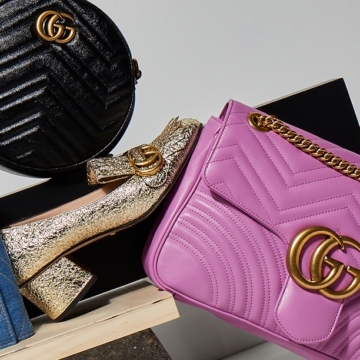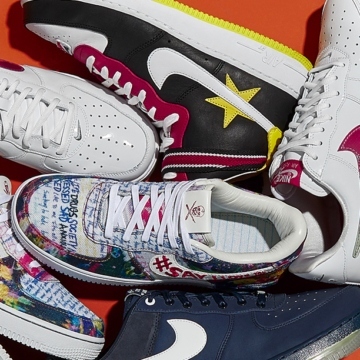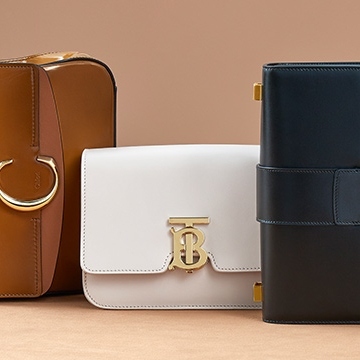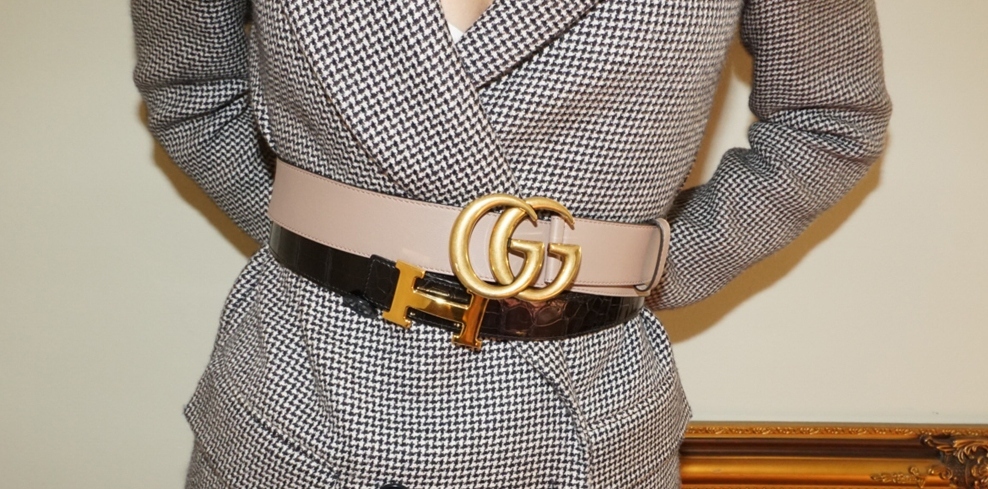

Forget the Logo Bag. It’s All About the Logo Belt.
If there’s one thing that has endured throughout the aughts-era rise of logomania, it’s the belt. An ever-present accessory of the digital street style landscape, it’s the workhorse that settles in the sweet spot of being both classic and of-the-moment. Just take the Alessandro Michele-designed GG Marmont belt for Gucci, which has been going strong since it first hit the runway. It’s versatile. It’s functional. And — controversial topic incoming — it supersedes the handbag as the go-to logo piece to have. Don’t take it personally, monogram-laden Gucci, Louis Vuitton and Hermès bags of the world, but it’s time to share the spotlight and officially recognize the reign of the logo belt.
The Lowdown On Logo Belts
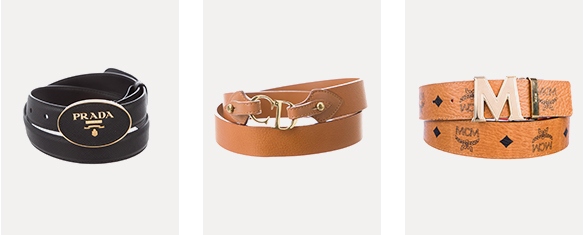
Prada Logo Belt; Christian Dior Logo Belt; MCM Visetos Reversible Monogram Belt
Though the love for logos is nothing new, it has changed significantly over the years. From Karl Lagerfeld at Fendi to Gianni Versace at his eponymous house, designers during the sixties, seventies and eighties introduced new, flashier ways for the masses to tout their favorite brands. This was further heightened in the nineties, when supermodels became celebrities and took logo recognition to a whole new level. Whether they were being photographed for advertisements and magazines or on the street by the paparazzi, their outfits became endorsements — and influential ones at that.
“One of the most iconic ’90s looks is from supermodel Linda Evangelista, posing in layers of gold chain jewelry with a chunky Chanel belt at her waist,” notes Merchandising Manager Noelle Sciacca, referencing a 1995 Harper’s Bazaar photoshoot. “It was an important time in fashion, and the resurgence of ’90s logomania has played a major role in bringing the logo belt back. Cardi B’s recreation of Evangelista’s look is a testament to that.”
The most notable difference between then and now? Logo belts are simply missing a few letters. “Today, the most popular logo belts feature a monogram instead of the brand’s full name,” notes Sciacca. “With a surge of creative directors swapping seats, we’ve seen designers pulling inspiration from the archives and reissuing heritage prints and past monograms as they start their new post.”
Another reason why these belts have staying power: they serve as the perfect entry-level luxury purchase. “A logo belt is lighter on your bank account than a handbag purchase,” acknowledges Valuation Manager Billy Garcia. Our annual Resale Report helps to confirm its appeal — the GG Marmont leather belt is one of our most-Obsessed items. Plus, when streetwear lovers decide to take the plunge and invest in their first luxury item, they are most likely to buy Gucci.
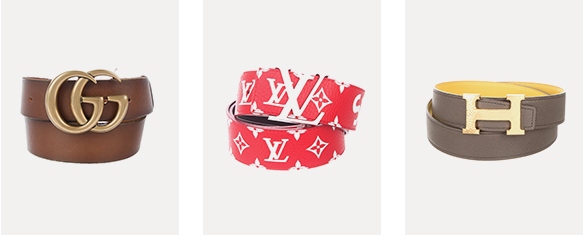
Gucci GG Marmont Belt; LV x Supreme Monogram Initiales Belt; Hermès H Belt
“The Gucci GG Marmont belt is recognizable worldwide,” acknowledges Garcia. You can thank technology for that. “A key factor in the logo belt’s ubiquity is accessibility to luxury. It’s never been easier to view and purchase fashion from your phone, and the growth of social media has contributed to the visibility of luxury brands. When this coincides with celebrity culture and influencers, it’s easy to see why logo belts from Gucci, Louis Vuitton, Off-White and Hermès are so coveted. There are so many options — size, style, material — and many brands market their logo belts as unisex, lifting any unspoken rules on who should wear what.”
So how do all of these logo belts stack up in the resale market? “Historically, Gucci GG Marmont belts and Hermès H Belt Kits are the two that retain the highest resale value,” explains Garcia. “They sell anywhere from 75% to 95% of their retail price, depending on color, material and condition.”
Spotting The Real Deal
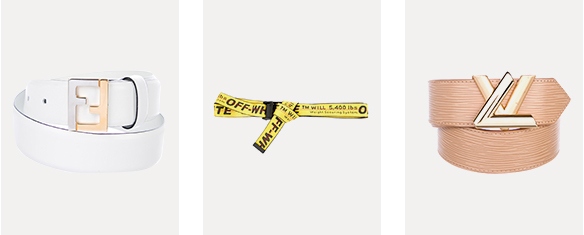
Fendi FF Logo Belt; Off-White Industrial Logo Belt; Louis Vuitton Epi Twist Belt
Logo belts give any outfit an instant monogram accent, but the biggest faux pas is wearing a faux belt. Since these belts are prime targets for counterfeiters, Billy Garcia knows that details are key when evaluating authenticity. “On Fendi FF belts, look for even proportions on the FF buckle,” says Garcia. “The silver should have a shine to it and should be hallmarked Fendi. A lot of fakes will have cheap hardware that can chip. The stitching should be neat and tight, and many belts will have light brown or contrasting stitching.”
Authentic Louis Vuitton Epi Twist belts should be textured, sturdy and durable. “The LV Twist buckle usually comes in two-tone hardware, with a silver-tone L and a gold-tone V,” explains Garcia. “Counterfeiters will usually get the coloring wrong. Some inauthentic belts will feature a silver-tone with a faint blue hue, a clear indication of cheap production. The belt itself will have a pointed edge on one side; if the belt ends in a clean-cut square, it’s a red flag.”
Off-White Industrial Logo belts are highly counterfeited, but font and spacing are usually dead giveaways. “Real Off-White Industrial Logo belts will feature even spacing between the ‘TM WILL’ text, whereas inauthentic versions will show a gap between ‘W’ and ‘ILL.’ The stitching should be bold and dark, not muted. Plus, the red stitching at the belt’s middle should be a warm, vibrant red and visible. Inauthentic versions will include a thin red stitch that has no fire to its hue.”
Last but not least, look for a smooth belt buckle when inspecting Gucci GG Marmont belts. “On genuine Gucci GG Marmont belts, the GG buckle should have a solid weight with a strong peg,” notes Garcia. “The metal should not be textured and the stitching should be neatly finished. The GG has an even, round shape and should never be too vertically elongated. Also, always check that the Gucci logo stamp at the belt’s reverse side is straight, legible and using the proper font.”
Choose your next logo belt from our editor-approved selection.
All items are pre-owned and consigned to The RealReal. Trademarks are owned by their respective brand owners. No brand owner endorses or sponsors this ad or has any association and/or affiliation with The RealReal.
Please note: Brand standards, logos and other identifying features may have changed since the time of publication.


